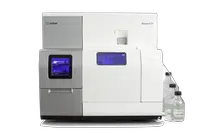Services
Surface Plasmon Resonance (SPR) ASSAYs
Surface plasmon resonance (SPR) using Biacore™, allows researchers to perform analysis of molecular interactions in real-time. SPR occurs when polarized light strikes an electrically conducting surface at the interface between two media. This generates electron charge density waves called plasmons, reducing the intensity of reflected light at a specific resonance angle, in proportion to the mass on a sensor surface.

SPR allows for real-time monitoring of molecular interactions without labeling the molecules involved. This label-free approach enables direct measurement of binding kinetics, affinity, and specificity, providing quantitative data and valuable insights into the interaction between a drug candidate and its target receptor. The real-time nature of SPR allows for the detection of transient or weak interactions that may be missed by other techniques. This information is crucial for understanding the potency and efficacy of a drug candidate.
By determining the rates of association and dissociation (equilibrium dissociation constant – KD), researchers can assess the speed and stability of the interaction. These data help in the selection and optimization of lead compounds and in comparing the relative affinities of different drug candidates.
SPR can also be employed to assess the potential off-target binding of a drug candidate and evaluate its safety profile. By screening against a panel of relevant receptors, researchers can identify potential interactions that may lead to adverse effects or off-target activities.
Furthermore, SPR can be utilized to study the binding of drugs to plasma proteins or assess their distribution and stability in biological fluids, aiding in absorption, distribution, metabolism, and excretion (ADME) studies.

